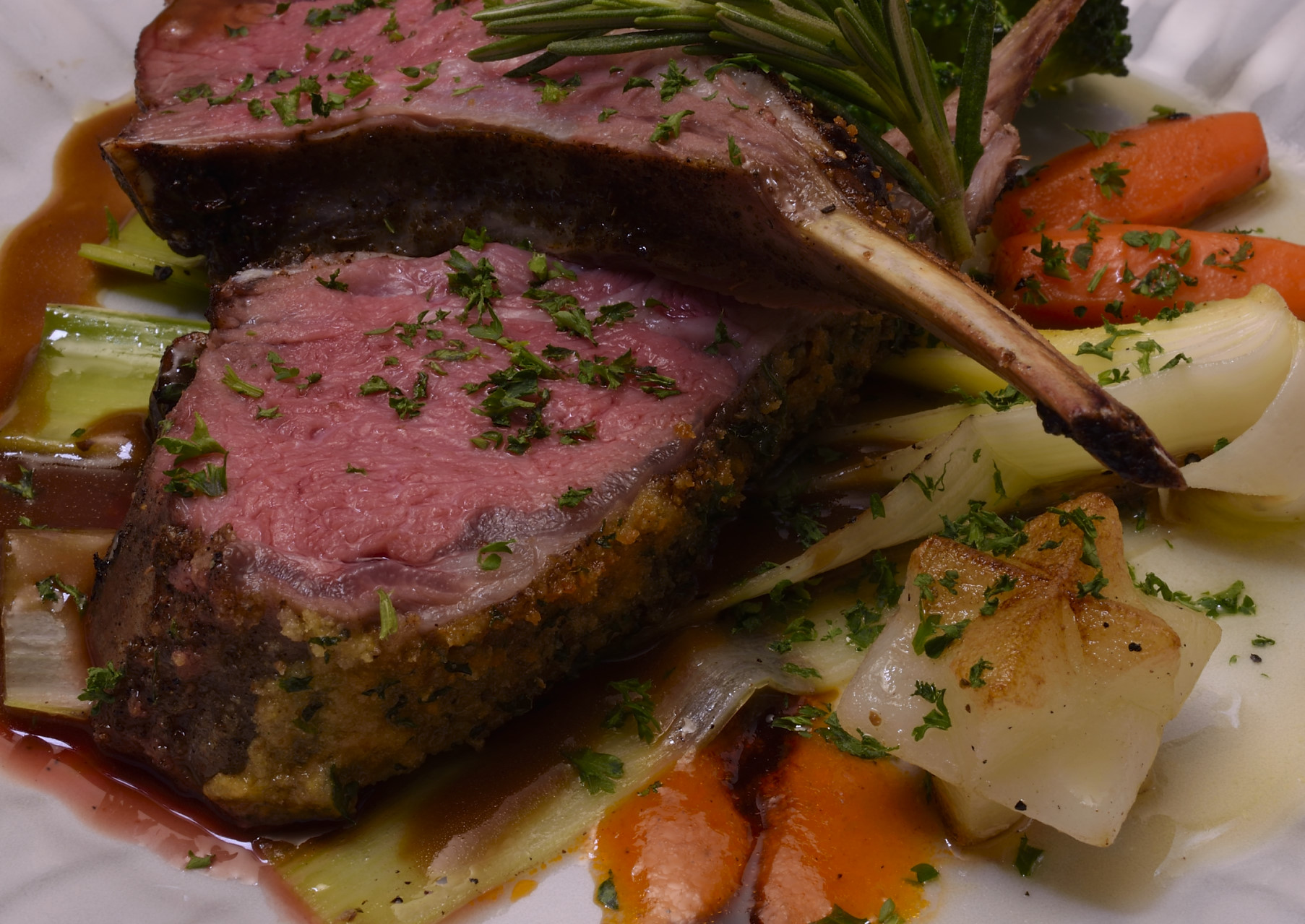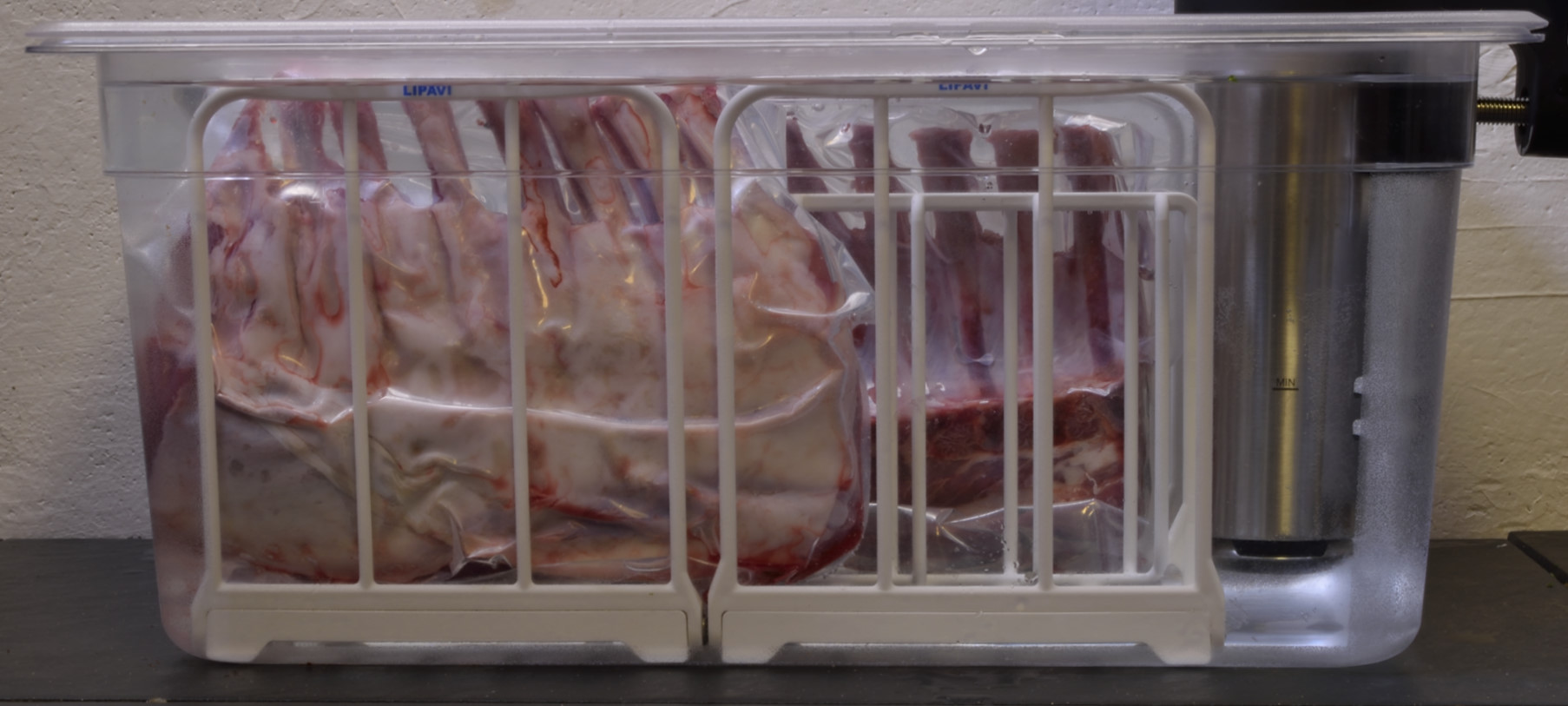Sous Vide: Australian Rack of Lamb, 2021
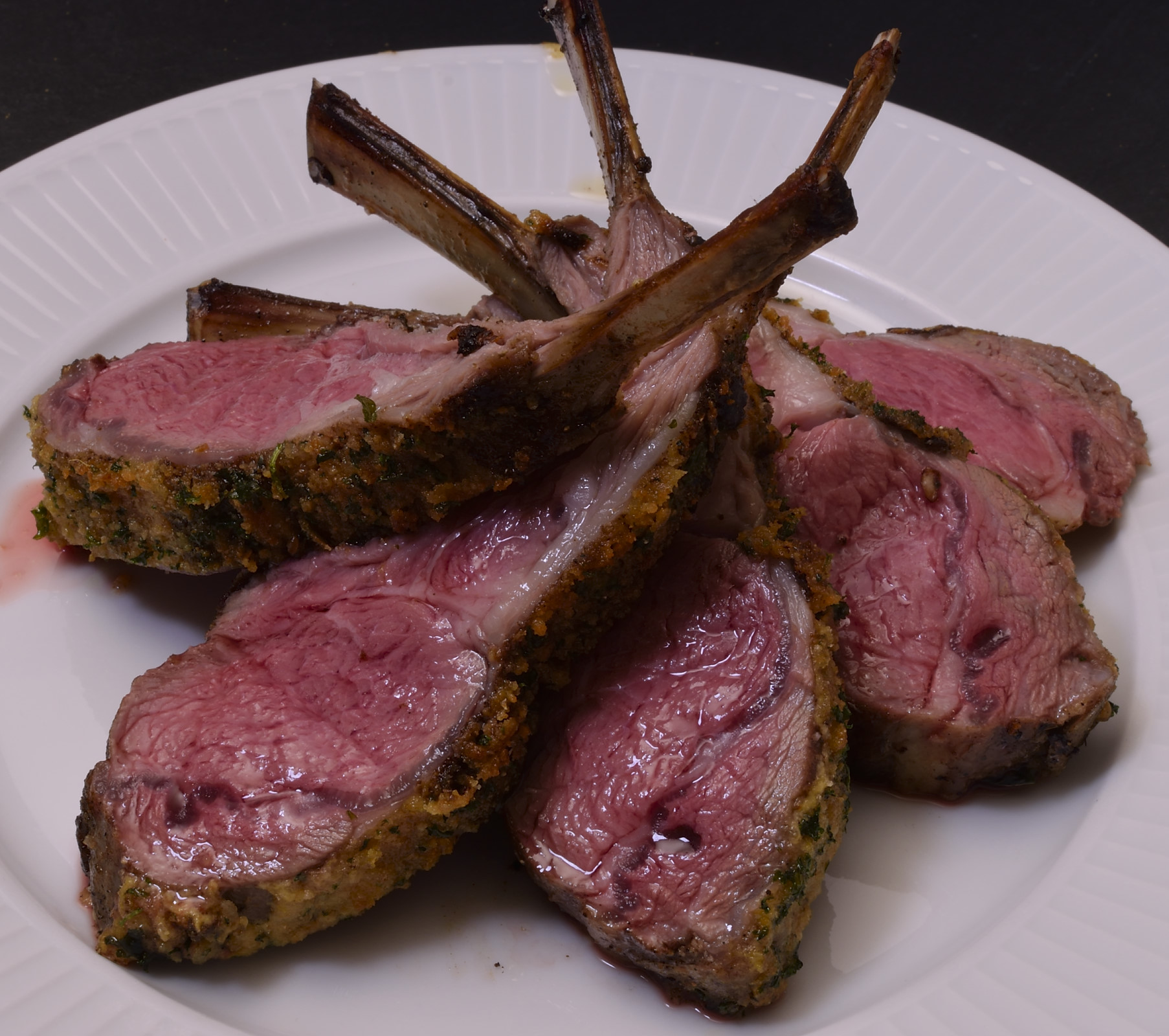
About
Almost all land and air dwelling proteins benefit from sous vide processing. Lamb is no exception.
Ingredients
Australian rack of lamb, one each, approximately 17 oz/475 g.
Kosher salt, 1-2 teaspoons.
Ground black pepper, a pinch.
Bread crumbs, approximately 0.25 cups.
Dijon mustard, as needed.
Garlic powder, a pinch.
Dried or fresh parsley, 1 Tablespoon.
Rub "to be named later" (optional)
Black Cardamom, 1 pod.
Chinese anise, 1 star.
Coriander, a few corns.
Allspice, a pinch.
Sage, fresh, 2 leaves.
Rosemary, fresh, a few green needles.
Sugar, a pinch.
Paprika, a pinch.
Vegetables as pictured:
Carrots, 1 each.
Broccoli florets, as needed.
Leeks, 1 each.
Rosemary sprigs, as needed.
Chopped parsley, as needed.
Sauces:
Catalina, as needed.
Brown sauce, as needed.
Equipment requirements
Immersion circulator, Inkbird or equivalent.
Lipavi C15L lid.
N15 polycarbonate racks.
Heat rated sous vide bags.
Channel or chamber vacuum device.
Home oven.
12"/300 mm skillet.
Propane torch.
Infrared or probe thermometer.
Instructions
How do you like your lamb?
Because of the pasteurization capabilities of sous vide, lamb can be safely served at the exact level of apparent doneness preferred by the practitioner. Here are some basic temperature setting guidelines: Rare: 129 F/54 C. Medium rare: 135 F/57 C Medium to Medium well: 140 F/60 C. Well done: 150 F/74 C.Above: Lipavi C15 container. N15 polycarbonate racks. Lipavi C15L lid.
Actual prep time: 1 hour Serves 2-3 Level of difficulty: 2.0
Procedure:
Preheat the water in your sous vide bath to the temperature that most closely matches your preference. After vacuum sealing the rack of lamb, process at the appropriate temperature for a minimum of 6 hours, as per your scheduling convenience. There is no "moment" before which the rack of lamb is not ready and after which it is overcooked. Even though the process of tenderization continues, the conversion of collagen to gelatin at sous vide temperatures is extremely slow--a difference of 2-3 hours is usually undetectable to the diner. As the temperature increases, the tenderization process accelerates. Even so, a rack of lamb processed at 140 F/60 C for 9 hours will not be noticeably different than one that was processed for 6 hours.Choices
When the processing time has elapsed, you have choices. You can skip ahead to the finishing steps or you can shock the sealed pouches in iced water to 70 F/21 C and refrigerate for future use. This feature is a very important safety procedure. Refrigerators and even freezers are not capable of cooling the hot pouches fast enough to meet food safety guidelines. Since the lamb is pasteurized, it can be kept in this preserved stated for up to two weeks as long as the package remains sealed. After shocking, refrigerate at 40 F/4 C until you are ready to move on to the next step.Finishing steps
Remove the rack from the pouch and pat dry. For the purposes of this demonstration, we removed one chop from each end to be used in another application.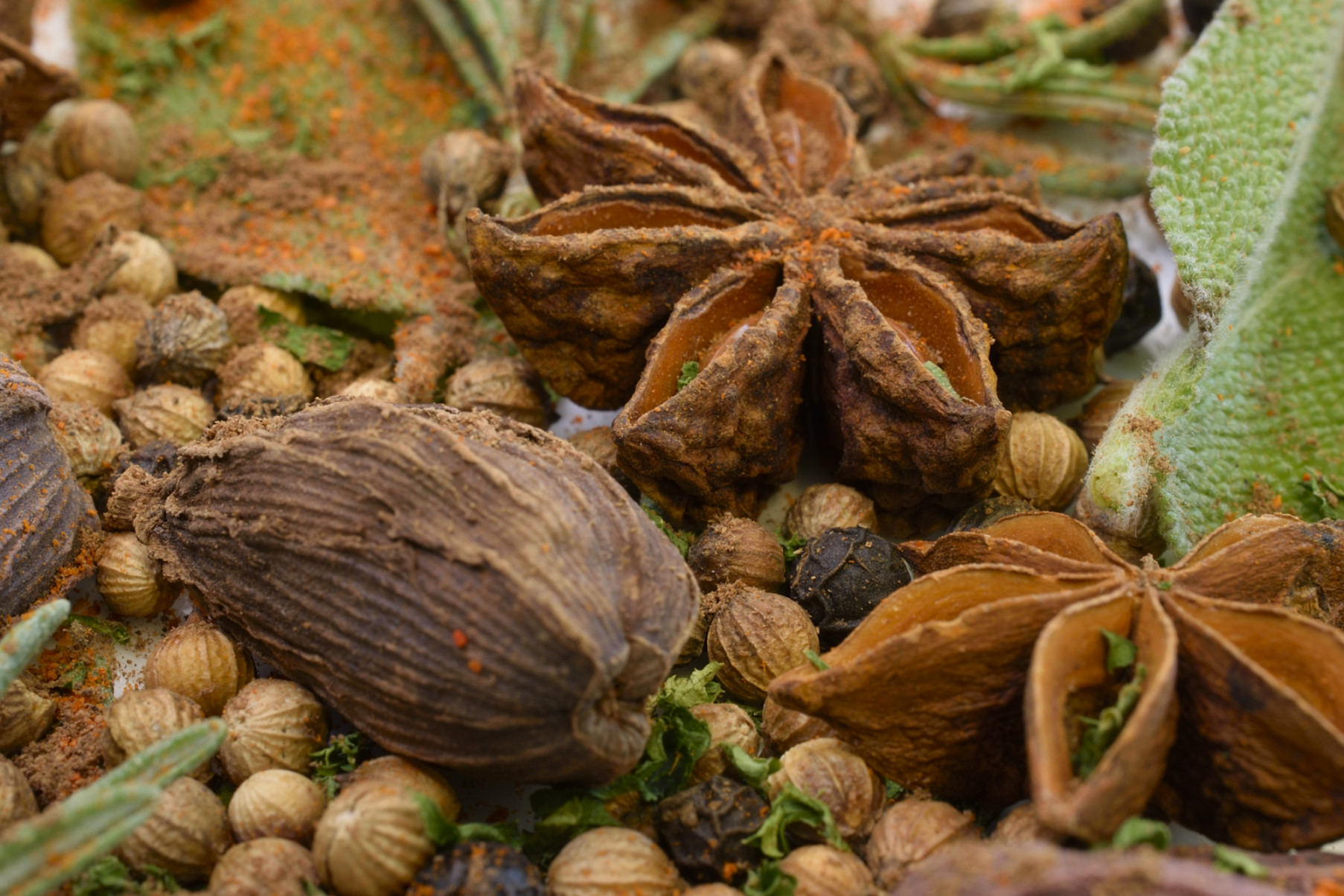 Grind and sift the rub. Preheat the oven to 400 F/200 C. To create a sticky surface, dust the rack with powdered egg whites and moisten slightly (optional).
Grind and sift the rub. Preheat the oven to 400 F/200 C. To create a sticky surface, dust the rack with powdered egg whites and moisten slightly (optional). 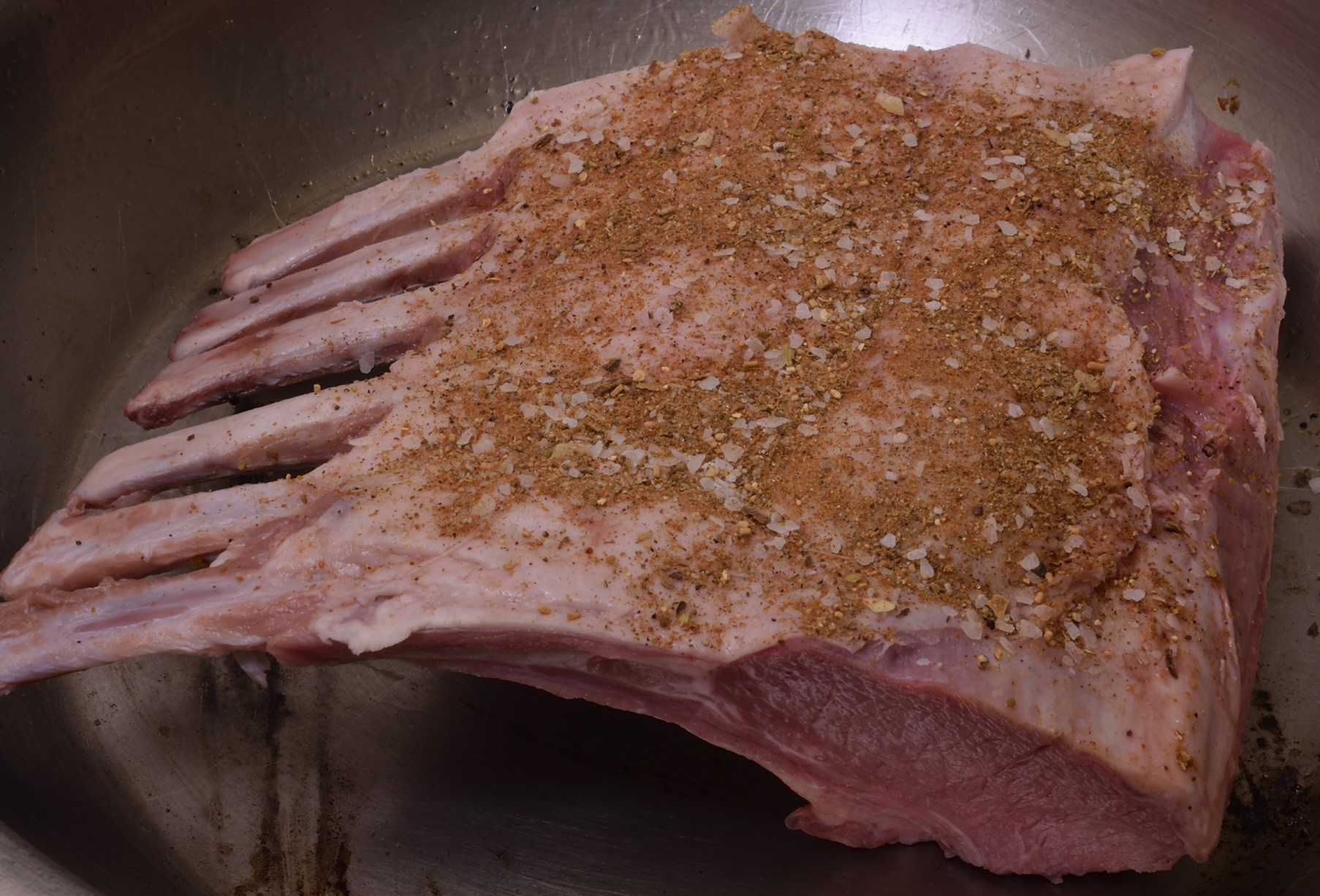 Sprinkle with the optional seasonings. Preheat the skillet to 275 F/135 C and add enough oil to coat the bottom.
Sprinkle with the optional seasonings. Preheat the skillet to 275 F/135 C and add enough oil to coat the bottom. 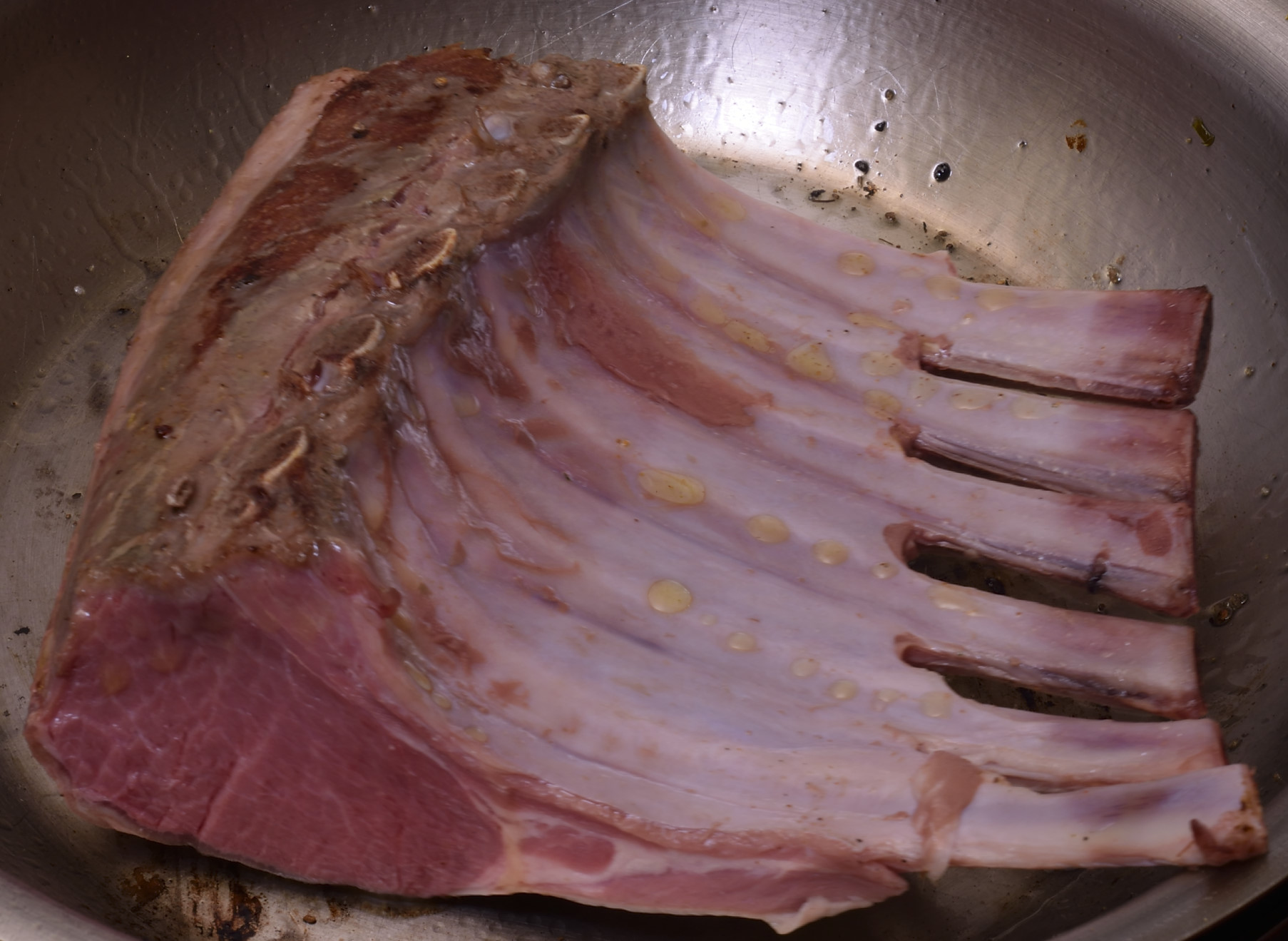 Put the rack in the pan fat side down and sear on medium high heat until the desired color is achieved--usually between 30 seconds and 1 minute. Use tongs to push down the surface covering the bones so that it browns evenly.
Put the rack in the pan fat side down and sear on medium high heat until the desired color is achieved--usually between 30 seconds and 1 minute. Use tongs to push down the surface covering the bones so that it browns evenly. 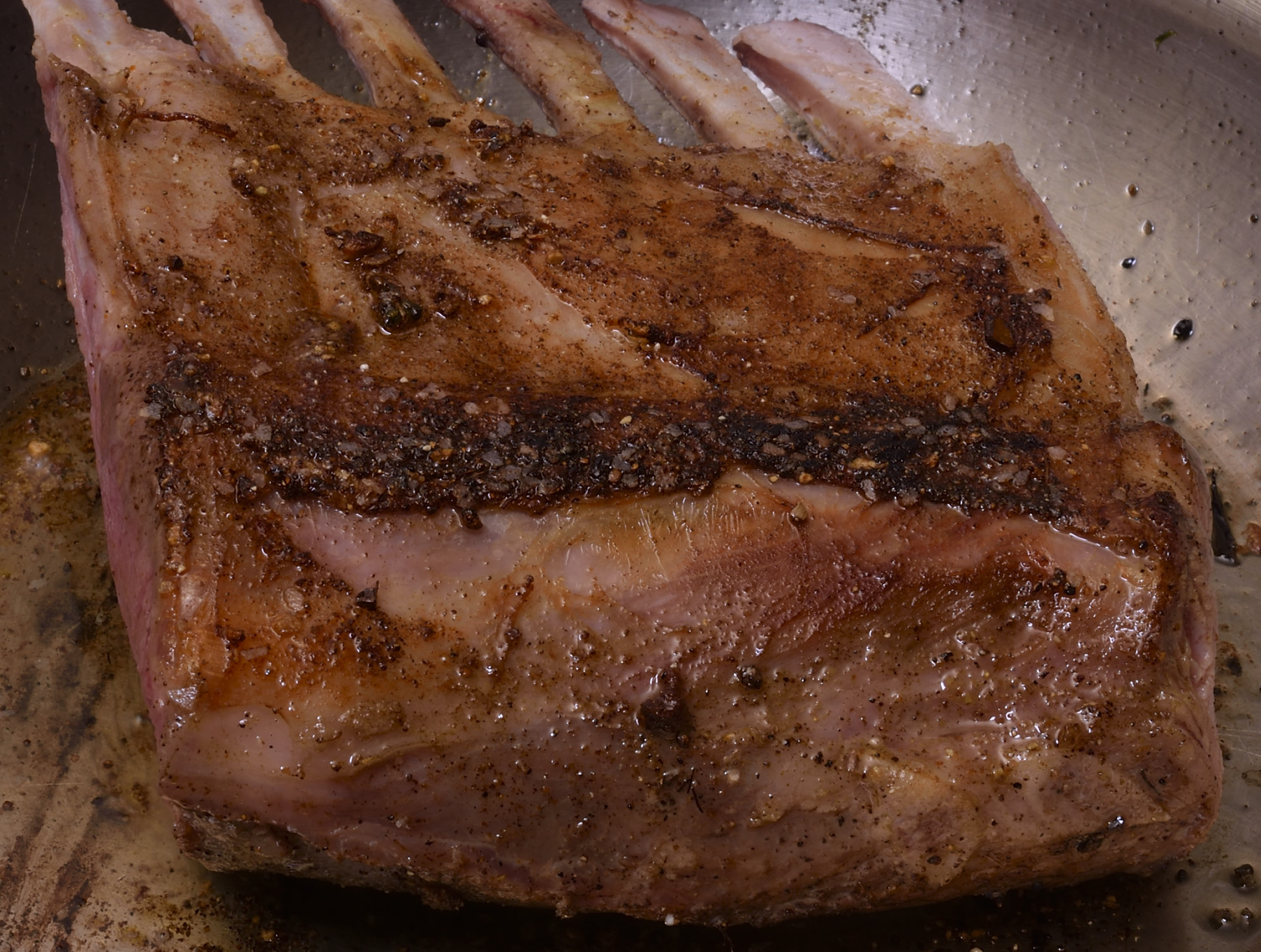 Turn the lamb over and continue to sear for 10 seconds.
Turn the lamb over and continue to sear for 10 seconds. 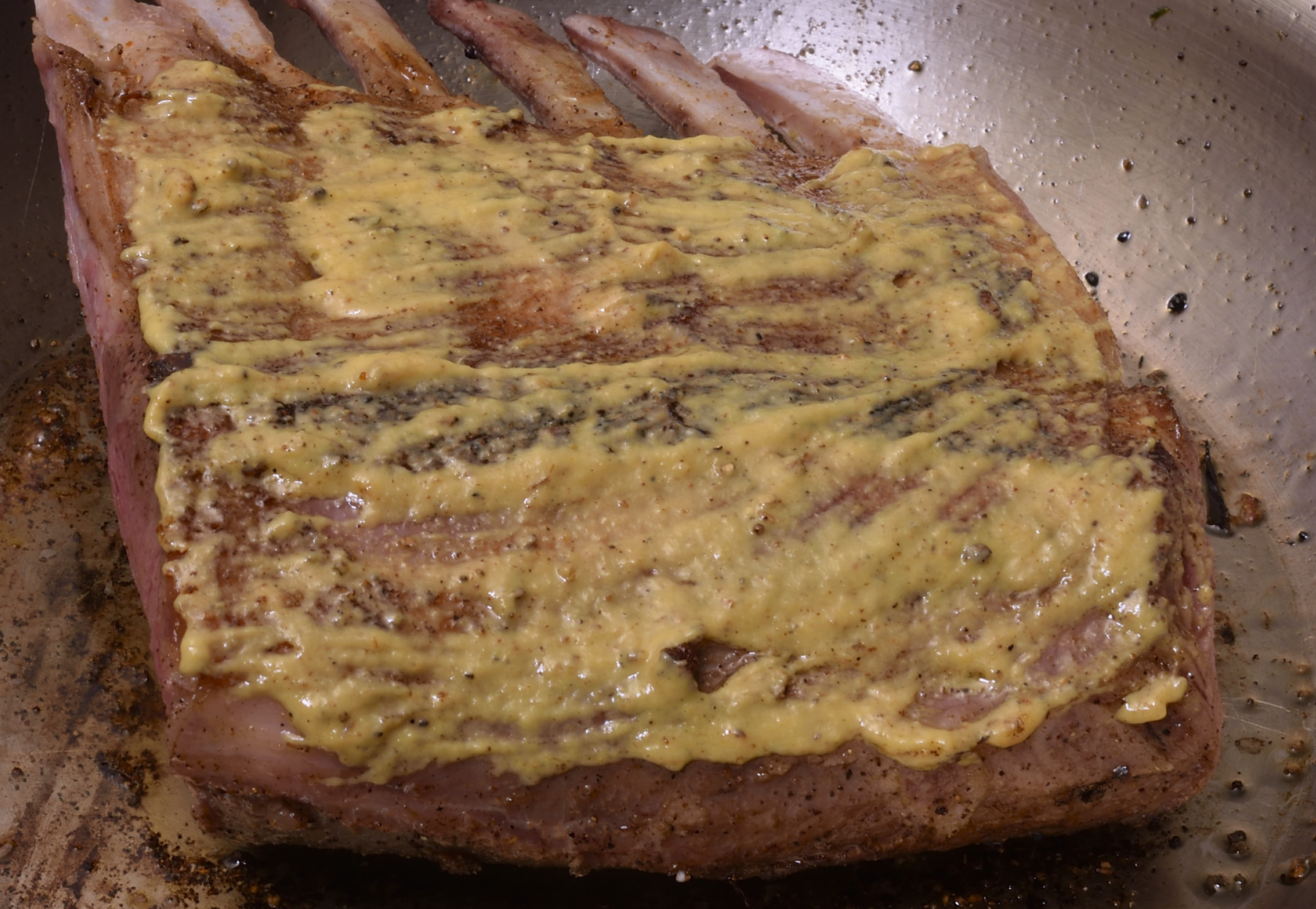 Use a pastry brush to apply a thin coating of Dijon mustard.
Use a pastry brush to apply a thin coating of Dijon mustard. 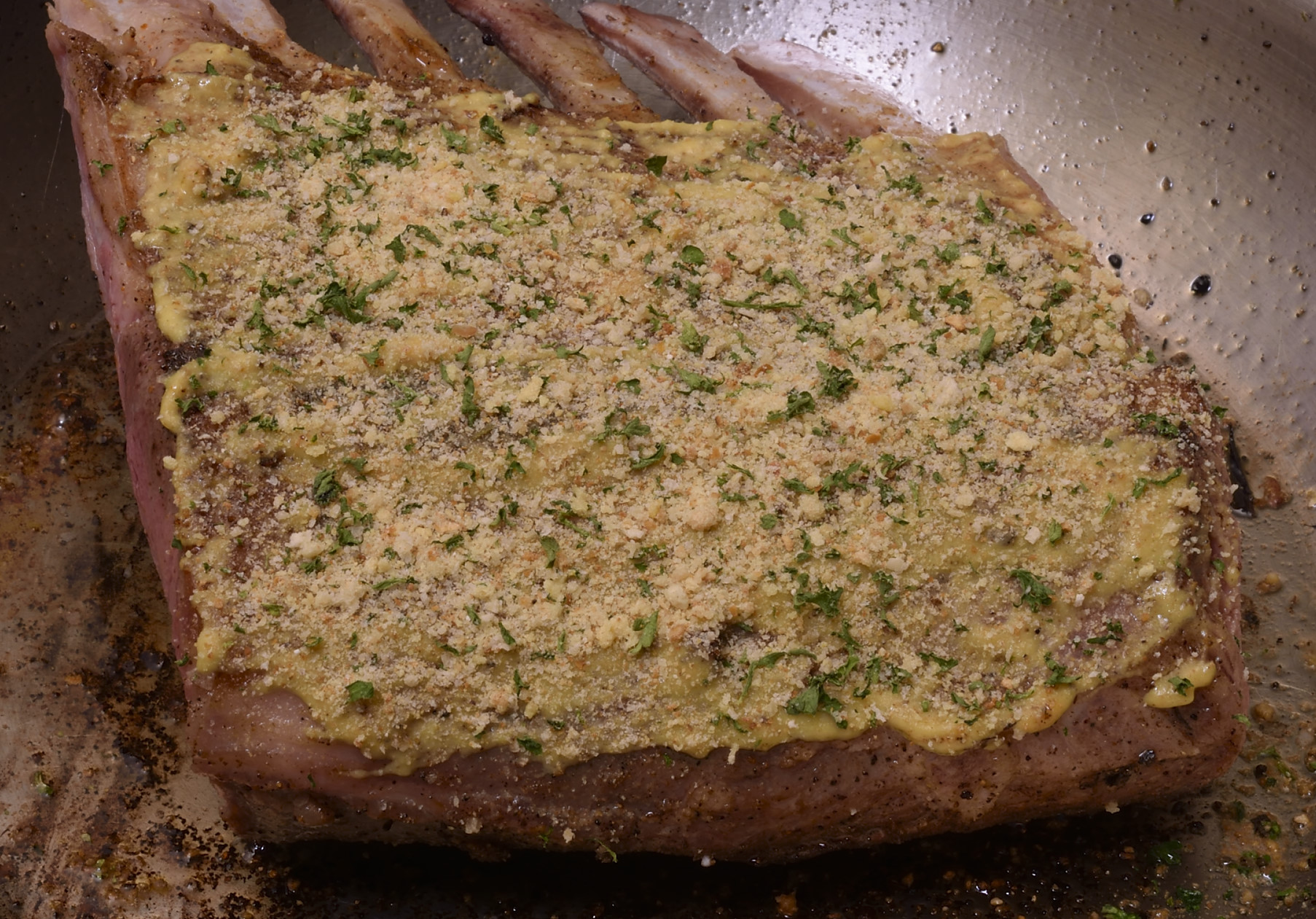 Combine the crumbs with the garlic powder and parsley. Sprinkle over the coated surface.
Combine the crumbs with the garlic powder and parsley. Sprinkle over the coated surface. 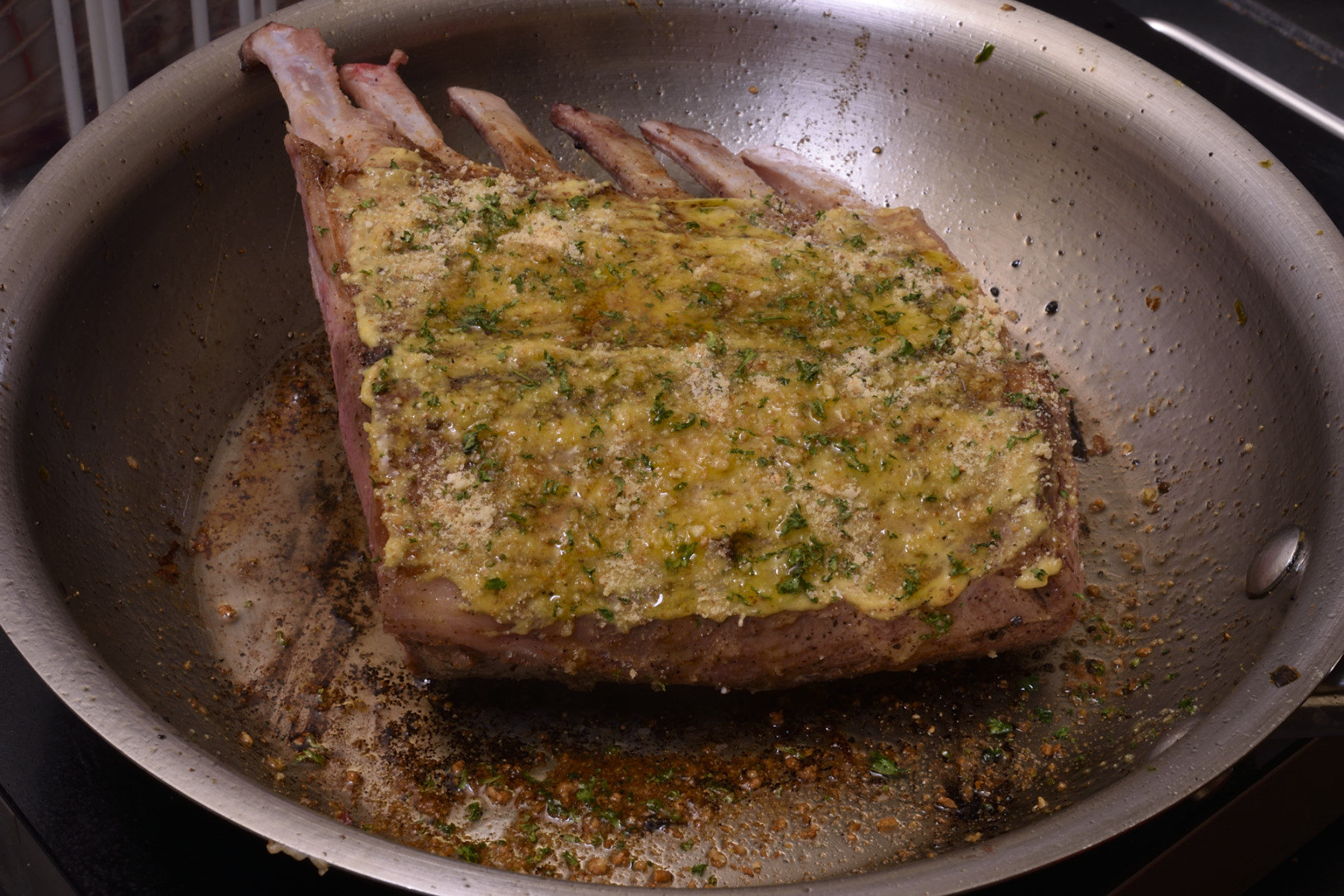 Drizzle with a few drops of oil.
Drizzle with a few drops of oil. 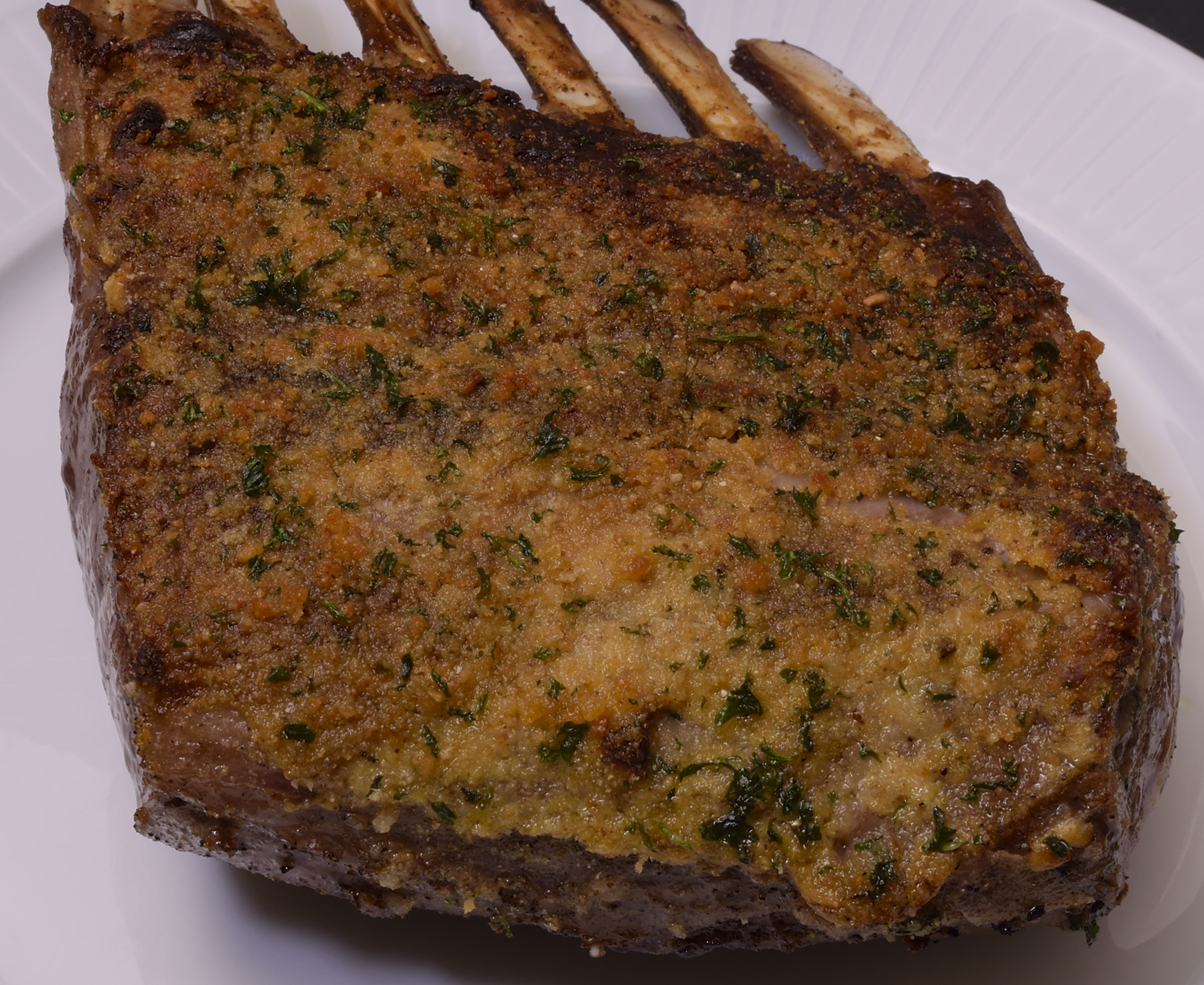 Stage into the oven and roast until the desired color is achieved, at least 125 F/52 C--"mouth hot." This process takes between 5 and 15 minutes, depending on how hot the lamb was when you started the searing process (see "Choices" above).
Stage into the oven and roast until the desired color is achieved, at least 125 F/52 C--"mouth hot." This process takes between 5 and 15 minutes, depending on how hot the lamb was when you started the searing process (see "Choices" above). 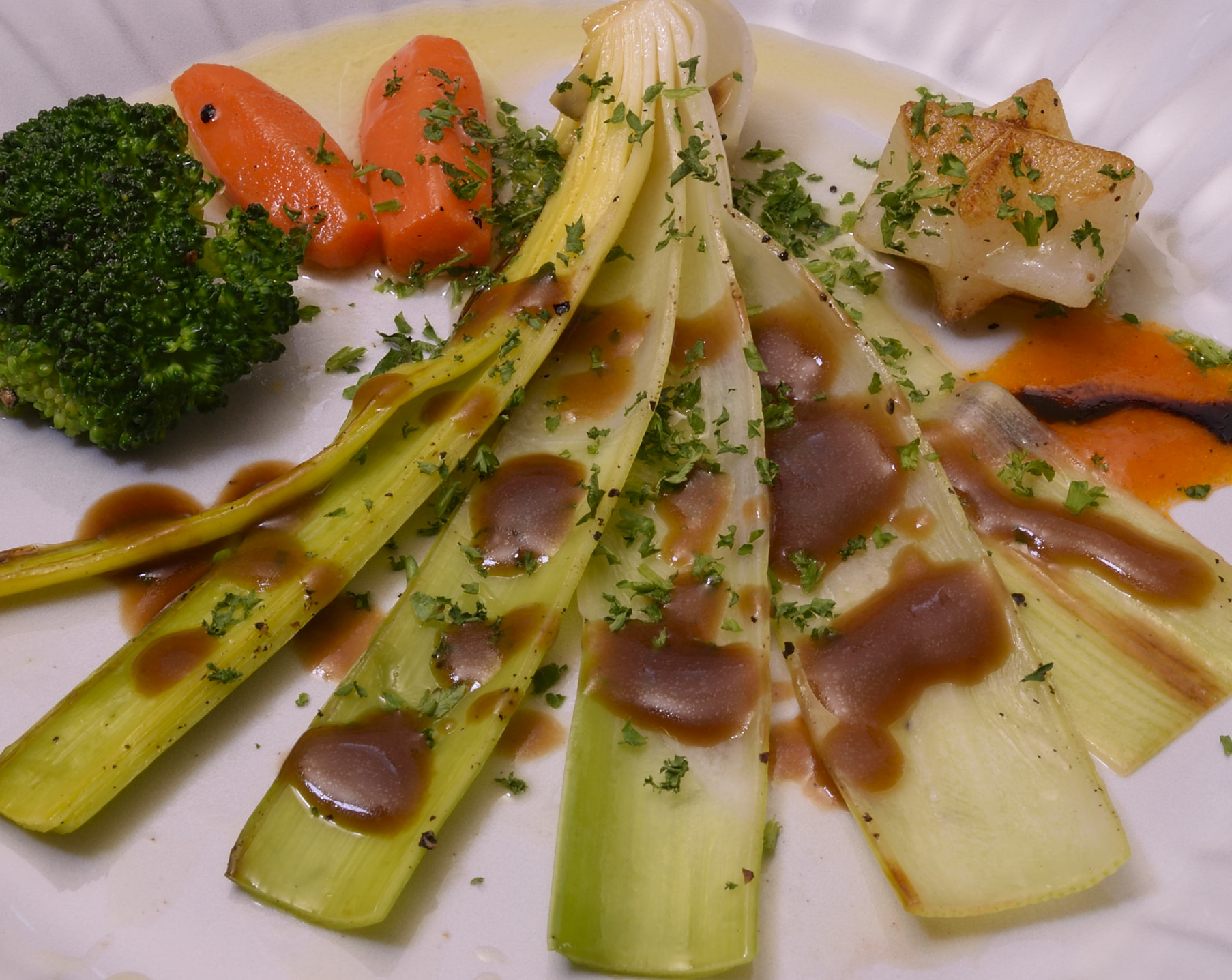 Here is the plate presentation that we used.
Here is the plate presentation that we used. 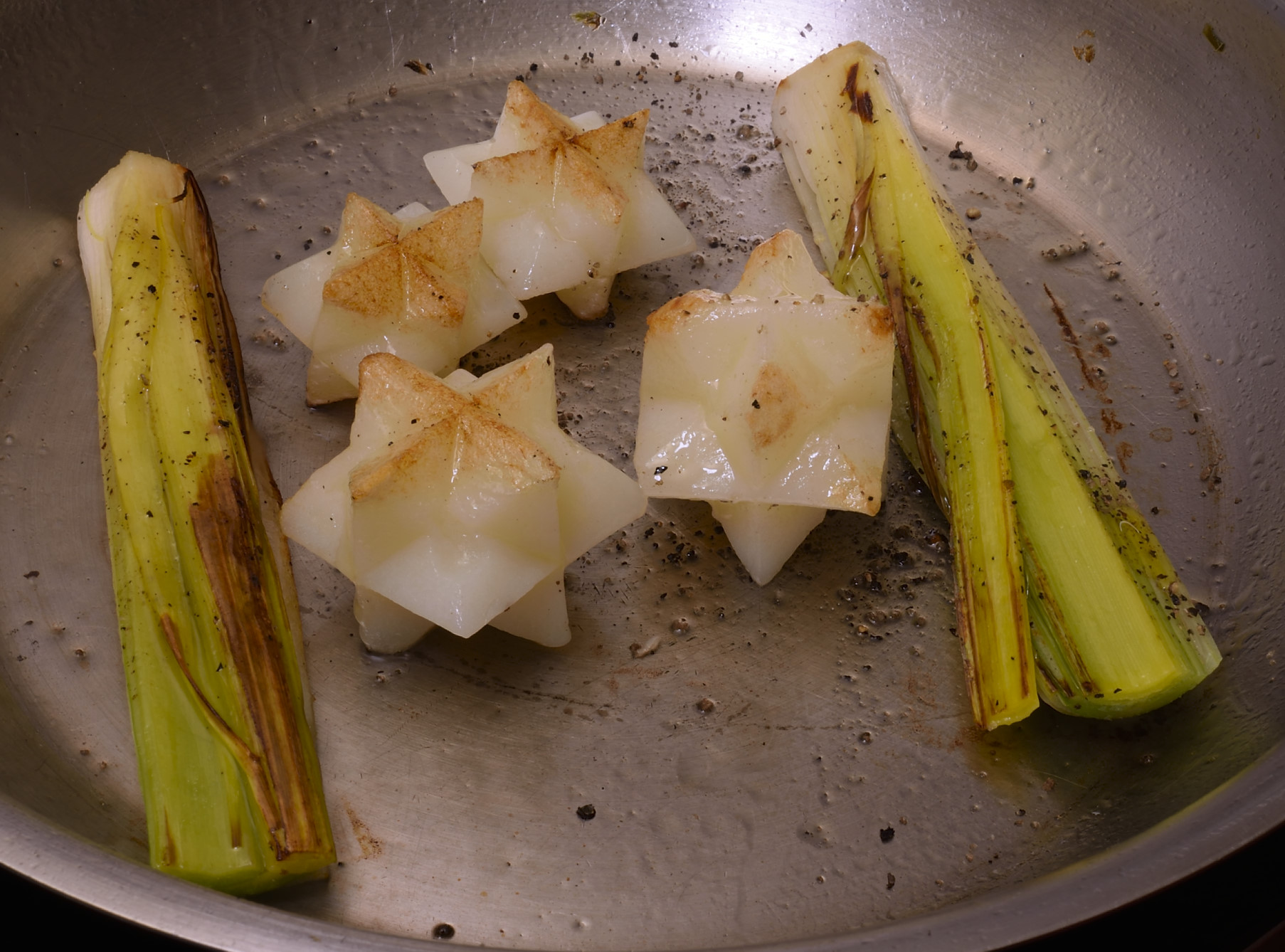 All the vegetables were blanched in boiling salted water, shocked in ice water and tossed with extra virgin olive oil in the hot pan.
All the vegetables were blanched in boiling salted water, shocked in ice water and tossed with extra virgin olive oil in the hot pan. 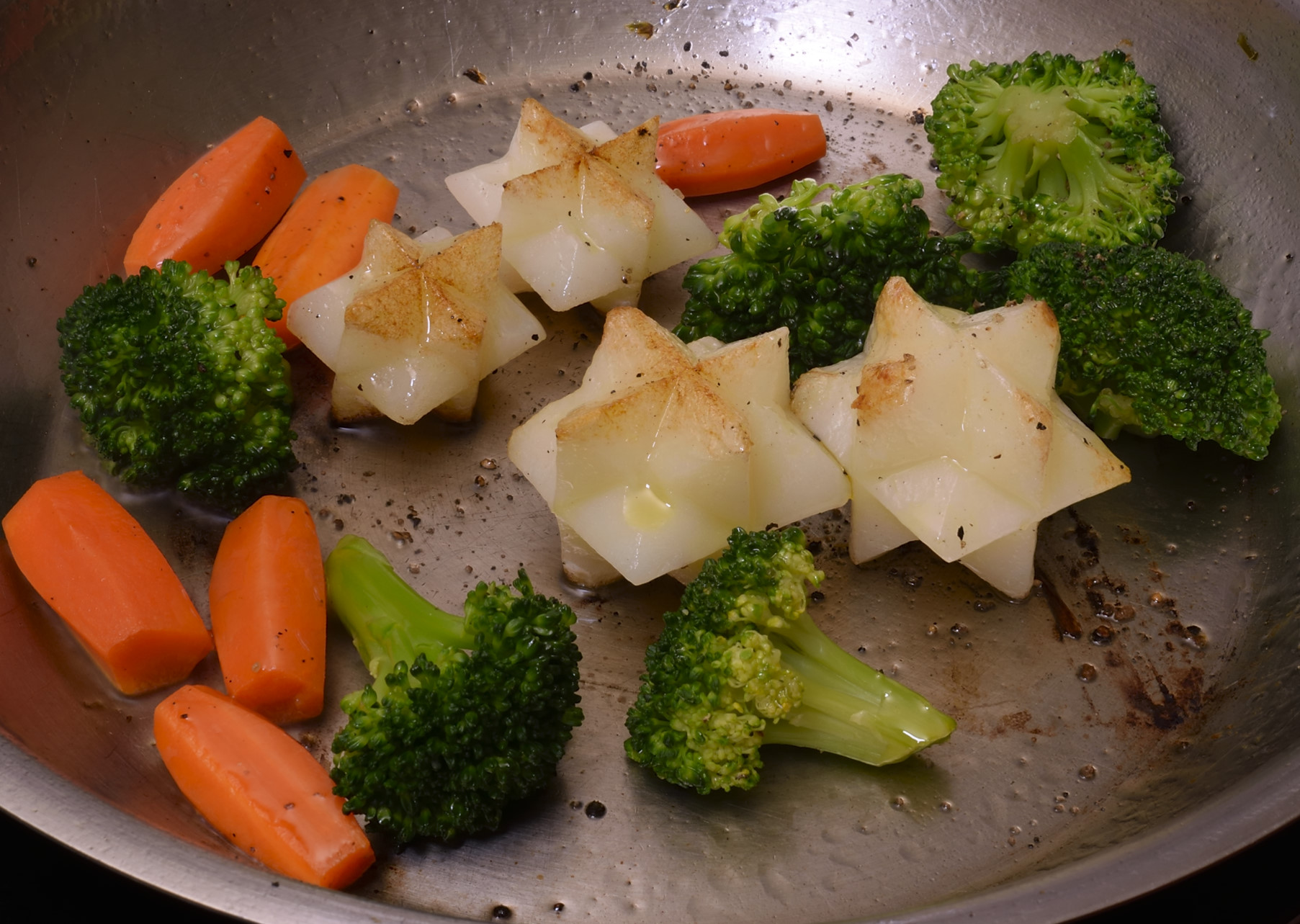 After removing the roast from the oven, let it rest on the counter for five minutes--this makes it much easier to carve.
After removing the roast from the oven, let it rest on the counter for five minutes--this makes it much easier to carve. 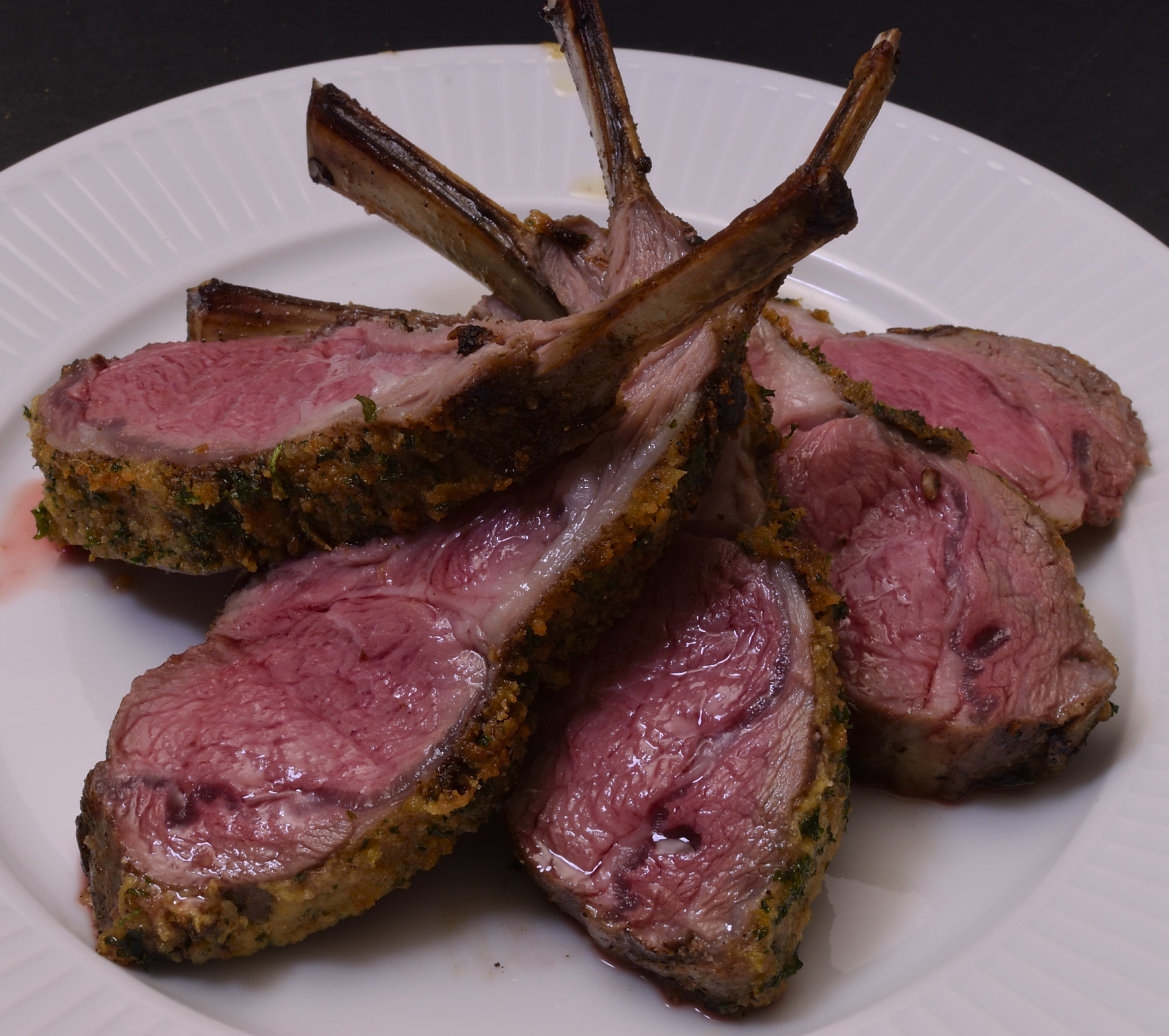 Cut the rack along the bone and shingle on the plate from right to left. This roast was processed at 130 F/54 C. If this is too rare for one or more of the diners, a propane torch works well to "take a bit of the red off."
Cut the rack along the bone and shingle on the plate from right to left. This roast was processed at 130 F/54 C. If this is too rare for one or more of the diners, a propane torch works well to "take a bit of the red off." 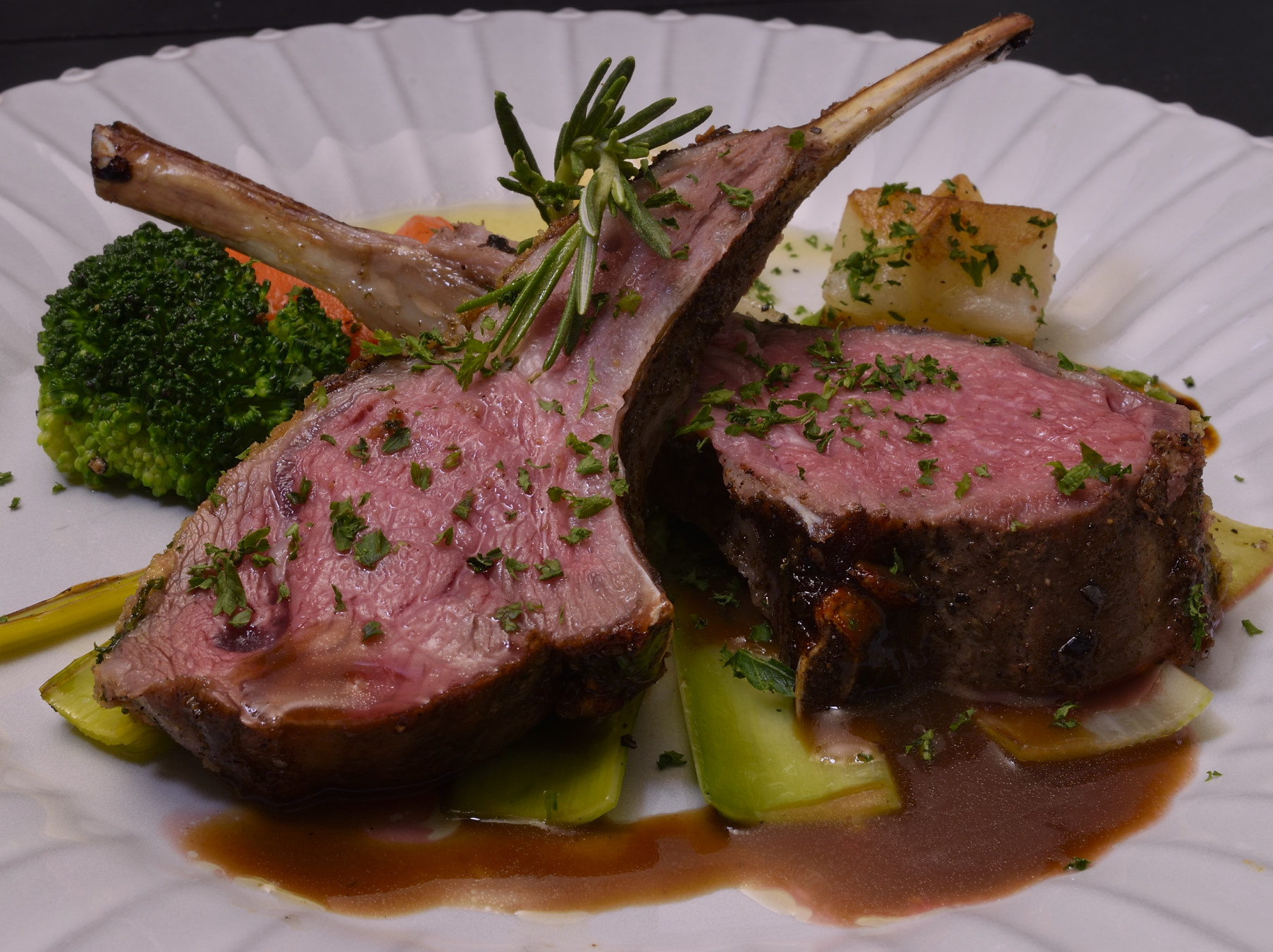 Note the uniform appearance of doneness. This is a feature specific and almost unique to sous vide processing.
Note the uniform appearance of doneness. This is a feature specific and almost unique to sous vide processing. 